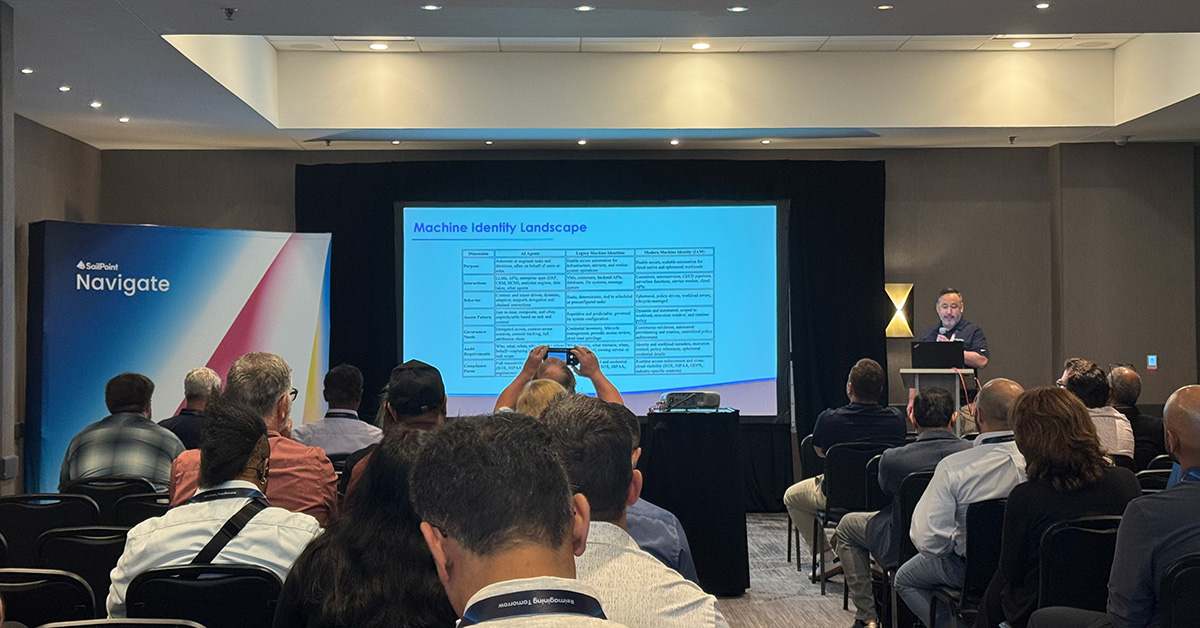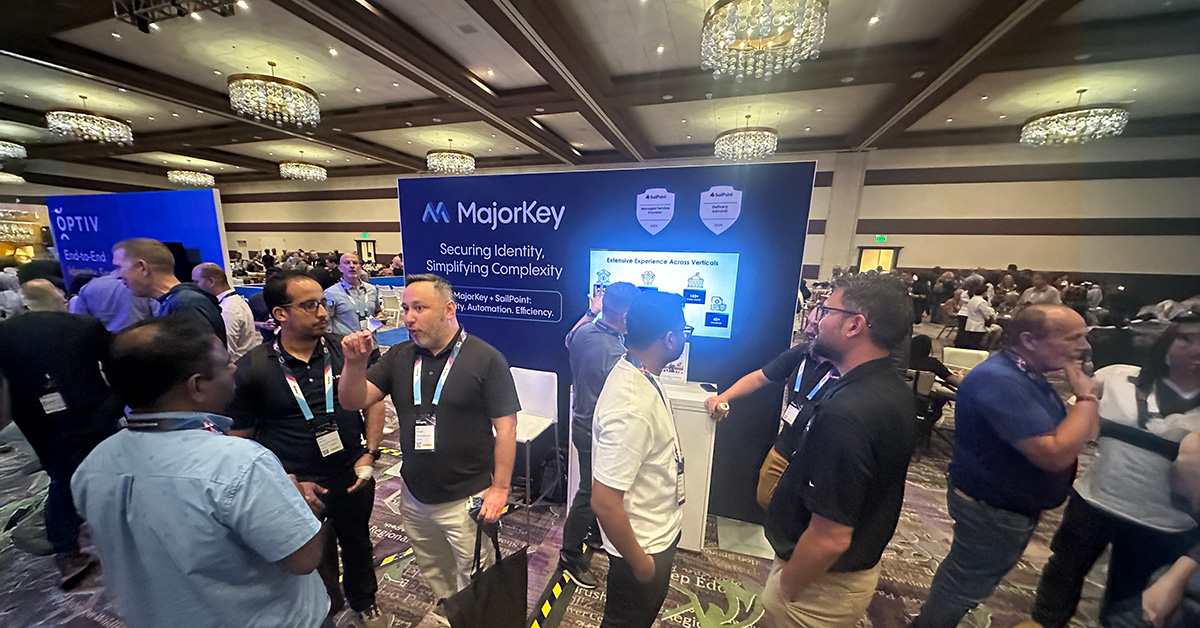Why Identity is the New Perimeter: Rethinking Security in a Cloud-First World
May 6, 2025
|
Duration:
6
min READ

This is Part 1 of our Microsoft Entra Identity series. Find Part 2 here, and look for a new installment every week.
In the past several years, cyberattacks have shaken some of the world’s most high-profile organizations. A large healthcare provider faced a ransomware incident that crippled operations nationwide. Another healthcare conglomerate reported the exposure of data affecting over 100 million individuals. Even a leading technology provider suffered an identity-based breach that allowed attackers to exfiltrate sensitive executive communications.
These weren’t firewall breaches. They weren’t zero-day exploits in obscure systems. In nearly every case, the attack vector was identity - misused, misconfigured, or compromised.
The message is clear: In a world where users, devices, apps, and data live beyond the traditional network edge, identity is the new perimeter. Boundaries are now defined to individuals, rather than their location or a specific geography. If you can’t secure who is accessing your systems, it doesn’t matter where they are. It’s time to rethink how we approach security in today’s cloud-first era — and that starts with identity.
The Death of the Traditional Perimeter
For decades, organizations secured themselves with a simple model: to keep the bad actors out, trust everything inside the firewall. But in a post-pandemic, cloud-first world, that model no longer applies.
What changed?
- Cloud adoption: Infrastructure, apps, and data have moved to SaaS and IaaS platforms like Microsoft 365, Azure, Salesforce, and AWS
- Remote work: Users work from anywhere, often on unmanaged devices
- B2B collaboration: Partners and vendors require access to internal resources, often without joining the network
- Device and app sprawl: IT no longer controls every endpoint or app used across the organization
Security can no longer be based on location or device alone. Instead, the access point we can control — and audit — is identity.
Identity as the Control Plane
Every digital action is tied to an identity: a person, a device, a workload, or a service principle. That’s why identity is now the logical place to enforce security controls to determine who has access to which resources, from what device, and why they require access.
With Microsoft Entra ID at the heart of modern identity infrastructure, we can:
- Authenticate users securely with MFA, FIDO2, or passwordless options
- Authorize access through role-based controls and dynamic group assignments
- Govern access via approval workflows, life cycle automation, and periodic reviews
- Detect and respond to threats using built-in intelligence and analytics
In short: identity enables granular, contextual, and adaptive security that scales across your environment.
Core Pillars of Identity-Centric Security
Authentication
- Enforce multi-factor authentication(MFA)
- Deploy phishing-resistant credentials like FIDO2 keys or Windows Hello for Business
- Leverage risk-based sign-in policies in Microsoft Entra to block or step up verification based on anomalies
- Use Microsoft Entra Global Secure Access to eliminate broad-based VPN access:
- Replace traditional VPNs with identity-driven Security Service Edge (SSE)
- Provide "just enough" network access to private resources without exposing firewall ports
- Reduce complexity and maintenance overhead associated with legacy VPN infrastructure
Authorization
- Use Microsoft Entra role-based access control (RBAC) to scope privileges
- Implement Just-in-Time (JIT) elevation via Privileged Identity Management (PIM)
- Set approval workflows for sensitive resource access
Governance
- Automate joiner/mover/leaver flows with Lifecycle Workflows, extended with Custom Extensions like Logic Apps for additional functionality
- Conduct regular access reviews to determine who has access to what
- Provide self-service access requests with Entitlement Management
Monitoring
- Monitor risky sign-ins with Microsoft Entra ID Protection
- Investigate threats with Microsoft Defender for Identity
- Use audit logs and Graph API to correlate identity activity with security incidents
- Leverage Microsoft Entra Global Secure Access to:
- Monitor and control access to private resources using identity-based policies
- Block access to malicious phishing websites attempting to harvest credentials or session tokens
- Enforce Zero Trust network access policies across hybrid environments
Real-World Example
Consider a large university that once relied on VPNs for all staff and faculty access. When hybrid learning became the norm, VPNs strained under the increased load, and IT struggled to manage secure access for thousands of users working across unmanaged networks and devices.
By shifting to Microsoft Entra and adopting an identity-first approach:
- Traditional VPNs were replaced with Microsoft Entra Global Secure Access, enabling identity-driven access to private resources without opening firewall ports
- Conditional Access policies and device compliance checks ensured only trusted, compliant devices could access sensitive systems
- Compliant network enforcement added another layer of protection, allowing access only from approved corporate networks or secure, monitored locations, even when off-campus
- Faculty accounts were governed using automated Lifecycle Workflows, and guest lecturers were onboarded with time-bound Entitlement Management
The result? Secure, Zero Trust access to both cloud and on-premises resources, all without the complexity of legacy VPN solutions. IT gained centralized visibility, the user experience improved dramatically, and governance was fully aligned with institutional policy.
Challenges and Misconceptions
Not all organizations make the identity shift smoothly. Common roadblocks include:
- Thinking identity = login. It’s much more – it’s governance, compliance, risk detection, and policy enforcement
- Underestimating over-permissioned accounts – least privilege is hard to maintain manually
- Neglecting non-human identities – service principals and managed identities often go ungoverned
Identity is a powerful control point, but only when properly managed across its entire lifecycle.
Getting Started with Identity-First Security
Here’s how to adopt a more identity-centric approach in your own environment:
- Inventory identities: Understand all users, apps, service accounts, and guests
- Secure authentication: Enforce MFA and deploy passwordless sign-in options
- Apply Conditional Access: Base access on real-time risk, device compliance, and location.
- Govern access: Implement lifecycle workflows and entitlement management
- Monitor continuously: Use Microsoft Entra insights and threat protection to detect anomalies
Conclusion
Network boundaries are porous. Devices are mobile. Cloud apps are everywhere. But identity is the common thread, the new perimeter and your best shot at managing access securely.
Securing “who” is more effective than securing “where.”
Read Part 2 in the Microsoft Entra Identity blog series: A deep dive into Microsoft Entra ID Governance and how it streamlines access control and compliance across your digital estate.
About the Author, Francisco Ureña
Based out of the New York Metro/Northeast Region, Frank has 25+ years in the IT industry. Frank provides strategic architecture and consulting to organizations looking to improve security and achieve Zero Trust in their environments. His extensive experience in identity and access management, governance, compliance, and risk management allow him to understand a client’s business needs and how to properly implement the right technology to solve specific identity challenges.
Authors

No items found.
Advisory
No items found.
.svg)



















.svg)
